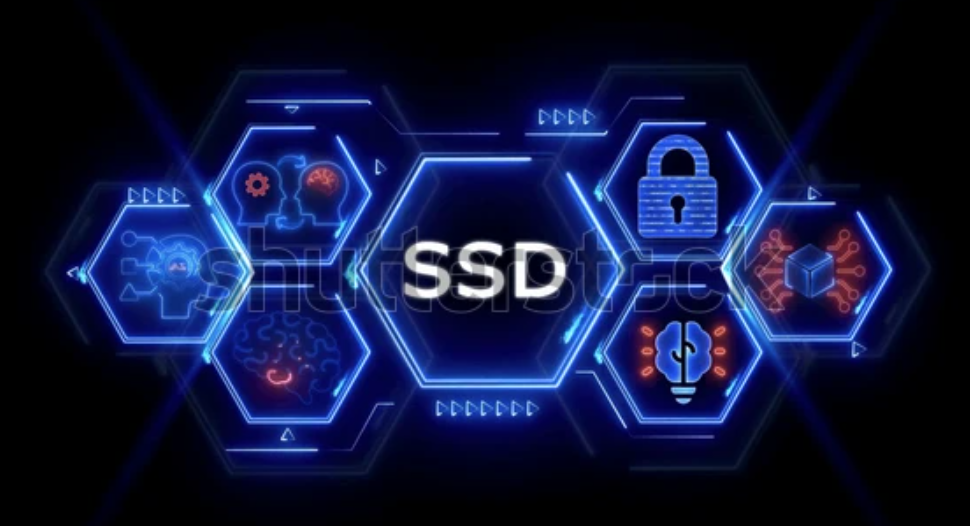Flash Storage Solutions for Embedded Designs
High Reliability Flash SSDs, Cards and Modules for Industrial Applications

How Hardware-Based Encryption is Implemented in SSDs
 Posted by Biraj Jamalayam on Wednesday, 26 Nov 2025
Posted by Biraj Jamalayam on Wednesday, 26 Nov 2025
SSDs store data in NAND flash memory. Too increase Flash Memory reliability, SSDs utilize wear leveling which spreads the memory usage accross the whole address space. This design makes it difficult to completely and efficiently erase stored data using software alone. To address this problem, most modern SSDs integrate built-in hardware encryption.
• No performance slowdown since a dedicated Encryption Engine inside the Flash Controller handles encryption instead of the main CPU.
• All data is encrypted automatically and on-the-fly, including temporary and hidden files.
• Encryption keys stay inside the drive, making the system resistant to OS-level malware.
• Completely independent on System OS, works on any operating system.
Encrypted SSDs use two main keys:
1. Encryption Key (EK)
• Randomly assigned 128-bit or 256-bit AES key.
• Encrypts all data written to the NAND.
• Stored only inside the drive in encrypted form, no user access to this key
2. Authorization Key (AK)
• Set by the user.
• Locks and unlocks the drive.
• On OPAL 2.0 SSDs, the AK encrypts the EK and secures the drive.
ATA Security
• Managed through the BIOS.
• Setting an ATA password creates the Authorization Key.
• Allows cryptographic erase through key updates.
TCG OPAL 2.0
• The industry standard for advanced drive security.
• Supports a 128 MB pre-boot environment for biometrics, TPM, or network authentication.
• Allows separate protected regions on the same drive, each with its own key.
• Supports centralized management and remote sanitization.

Category:

Integrating Encryption in SSDs
 Posted by Biraj Jamalayam on Tuesday, 25 Nov 2025
Posted by Biraj Jamalayam on Tuesday, 25 Nov 2025
This article explains how modern Solid State Drives protect data through advanced encryption and dedicated security technology.

Data encryption transforms readable information called plaintext into scrambled data called ciphertext. Without the proper decryption key, the information is useless. Decryption reverses this process and requires a secret key, and often a password. When encryption works alongside secure protocols, it forms one of the strongest defenses for sensitive information.
1. Symmetric Encryption
• Uses one key for both encryption and decryption.
• The same key must be shared by both sender and receiver.
• Example: AES.
2. Asymmetric Encryption
• Uses a public key to encrypt and a private key to decrypt.
• The public key can be shared freely.
• Only the intended recipient has the private key needed to open the data.
• Example: When your phone sends encrypted information to a bank server.
Both categories protect data in transit and data stored on devices. When used on SSDs, encryption keeps information safe even if the physical drive is lost or stolen.
Advanced Encryption Standard (AES)
• Symmetric block cipher.
• Used by the U.S. government for classified data.
• Works on 128-bit blocks.
• Versions include AES-128, AES-192, and AES-256.
• Higher key length means more rounds of encryption and stronger protection.
Triple Data Encryption Standard (3DES)
• Symmetric cipher that evolved from DES.
• Encrypts data three times using three 56-bit keys.
• Much slower than AES and being phased out, though still used in some financial systems.
RSA
• Asymmetric public-key algorithm.
• Security comes from the difficulty of factoring large prime-based numbers.
• Often uses 1024-bit or 2048-bit keys.
• Strong but slower than AES.
READ MORE

Category:
Page